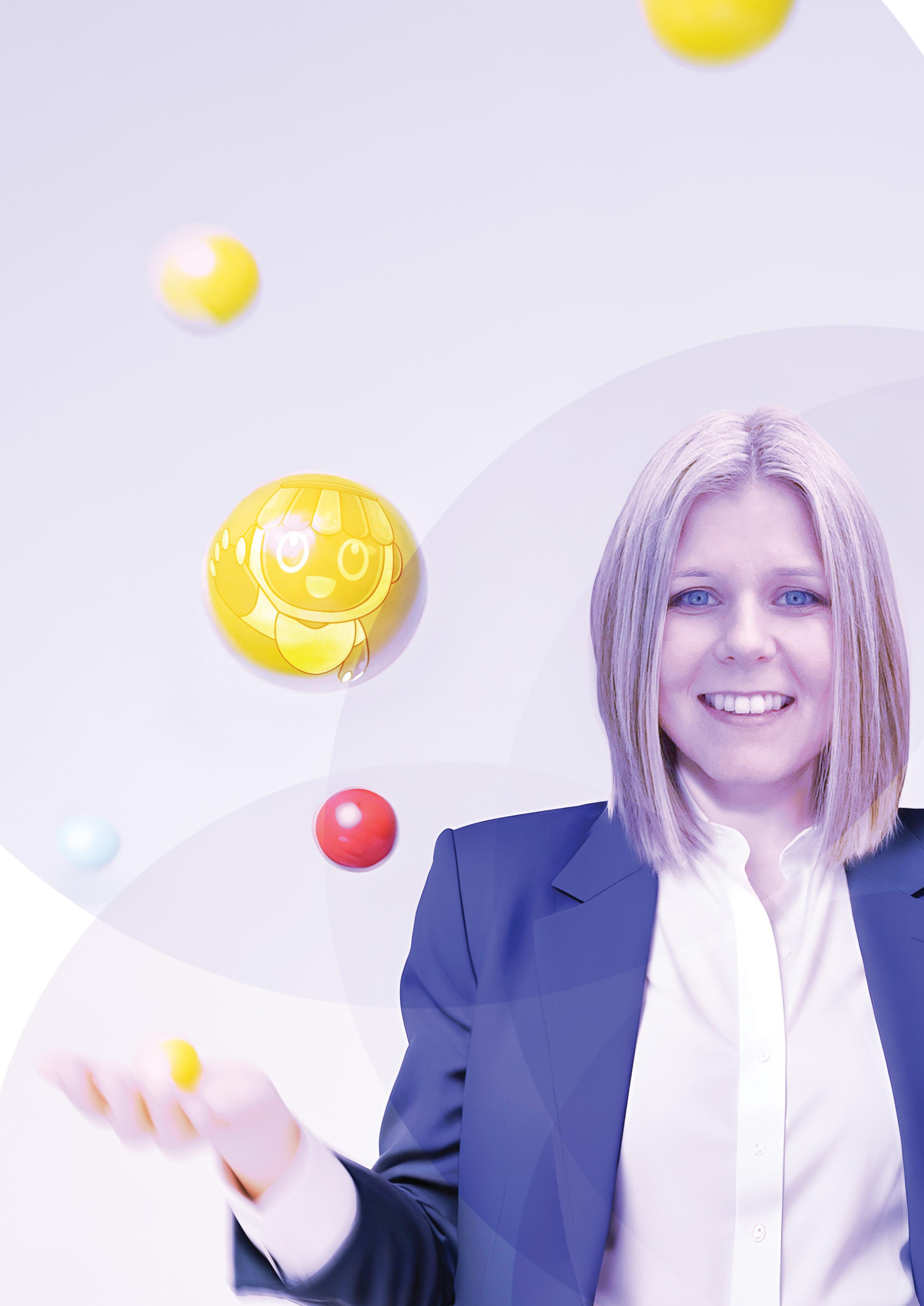
6 minute read
Using Design Thinking to create interactive learning experiences
This month, Sooz Young of Technology Coaching talks us through her process for juggling client budgets, expectations and the needs of the learners, to create engaging learning experiences.
When it comes to designing effective learning experiences, we’re usually presented with several challenges.
First, understanding the diverse needs and preferences of learners is a complex task that requires thorough research.
Then, there’s the challenge of crafting engaging content that keeps learners motivated and helps them retain information.
Adding interactive elements like gamification and simulations brings another layer of complexity.
Plus, the rapid pace of technological advancements means learning materials need constant updates.
Finally, ensuring that learning outcomes align with both learner needs and organisational goals requires meticulous planning and iterative refinement.
There’s a lot to think about for learning designers, and additionally, it can be a costly process for companies that are just looking for a way to train their workforce to be ready and willing to perform the tasks that are asked of them, in a timely and effective way.
So where do we start?
By embedding the principles of design thinking into your methodology, you ensure that every learning journey you create is not only effective but also engaging and enjoyable. Let’s explore this a little more.
Empathise: Putting Learners and Leaders First
I always start with empathy, truly getting to know our learners and clients. It’s a two-sided challenge: clients struggle with unskilled workforces draining time and money, while learners often lack motivation and see training as compliance rather than an opportunity for growth.
I recommend working closely with clients from the beginning, as this helps to pinpoint the core challenges for both sides. This involves in-depth research through surveys, interviews, direct observation, and considerations of tech stack, budget, and timelines. By doing so, you can tailor solutions to meet the specific needs of both the client and the learner, ensuring a win-win outcome.
Define: Setting Clear Objectives
Once you have a clear understanding of your learners, it’s time to define precise learning objectives. This is the narrow-down stage!
By identifying the problems in the empathise stage, you clarify what the learning outcomes should be. These objectives are aligned with the client’s success criteria, ensuring that the end goals are clear and achievable.
For example, if learners struggle with information retention, you might aim to enhance engagement through more interactive elements. If learners need to develop specific technical skills, we might incorporate practical exercises. Similarly, if motivation is an issue, you could introduce gamified learning to boost engagement. This targeted approach ensures that learning solutions are effective and impactful. It all goes back to what the main problems are for the client and the learner.
Ideate: Brainstorming Innovative Solutions
In the ideation phase, creativity reigns supreme. Brainstorm solutions to address the defined problems, ensuring you check in with the client to stay on the right path. This might include gamification to boost motivation. Interactive simulations can provide hands-on experience with new skills, while collaborative projects foster teamwork and communication. For instance, a virtual escape room could reinforce problem-solving skills, or a role-playing scenario might help practice customer service.
Exploring a wide range of ideas ensures your solutions are diverse and cater to different learning styles. This has certainly become more of a focus for my own clients, as I help them to meet the needs of their ever evolving workforce demographics.
Prototype: Bringing Ideas to Life
Prototyping is where your ideas come to life. Creating tangible models of solutions, allows you to test and refine them.
For example, you might develop a sample module with gamified elements and interactive exercises. This hands-on approach helps to identify what works best for the client and the learners, and make necessary adjustments before full-scale implementation.
The technology for delivering e-learning has really exploded in recent years, so if it’s within your skillset, you might look to prototype interactive video to enhance visual learning or develop an augmented reality app. Here at Technology Coaching, we designed a Virtual Reality Careers Fair for Transport Scotland’s Academy9 Project. This VR careers fair addressed the challenge of hosting in-person events to promote STEM careers in remote and rural areas across Scotland. By creating a virtual event space accessible anytime and anywhere, we provided the perfect solution for the client.
Test: Refining Through Feedback
Testing is a critical phase where you gather feedback from real users. Running pilot courses or beta versions of the modules, allows you to collect valuable insights that inform your final designs. This iterative process ensures solutions are polished, effective, and ready for broader deployment.
For example, test a new gamified learning module with a small group of learners to gauge engagement and identify any issues. Or conduct a focus group for an interactive simulation to get detailed usability feedback. You want to choose your ‘biggest fans’ for this testing phase. That could be your digital champions in your office, or your most engaged clients.
Going back to my example of the Virtual Careers Fair, we shared the VR space with the team at Transport Scotland for feedback, ensuring it met their requirements set in the design stages. Then, we piloted the VR space with young people across three schools in Scotland, making them beta testers. Their unique feedback on the technical design, functionality, and learning experience helped us make it relevant and effective for them.
Place Gamified Learning and Discovery-Based Challenges At Your Core
Gamification is integral to the design philosophy. It puts the onus on learners to actively participate, make decisions, and see the consequences of their actions, enhancing their overall experience.
Discovery-based learning and building in challenges encourages learners to explore, experiment, and solve problems independently, fostering critical thinking. These essential skills are just as important to leaders as the technical skills. They want a workforce that is able to do, as well as communicate about what they can do!
Building a Future-Ready Workforce
Our ultimate goal at Technology Coaching is to create a future-ready workforce - your own company’s may be different but by taking a design thinking approach, you can guarantee that your learning experiences are not only interactive and engaging but also aligned with the demands of the future.
Design thinking is more than a methodology; it’s a commitment to innovation and excellence in learning design. By focusing on your client’s success criteria, integrating gamified learning, and promoting discovery-based learning, you, too, can deliver solutions that are engaging, effective, and future-focused.
So, I’ll leave you with this question: “How can you bring the Design Thinking Process into your learning design?”
Sooz Young is the Director of Glasgow-based Technology Coaching, delivering digital skills training and interactive learning experiences. https://www.linkedin.com/in/soozyoung/











